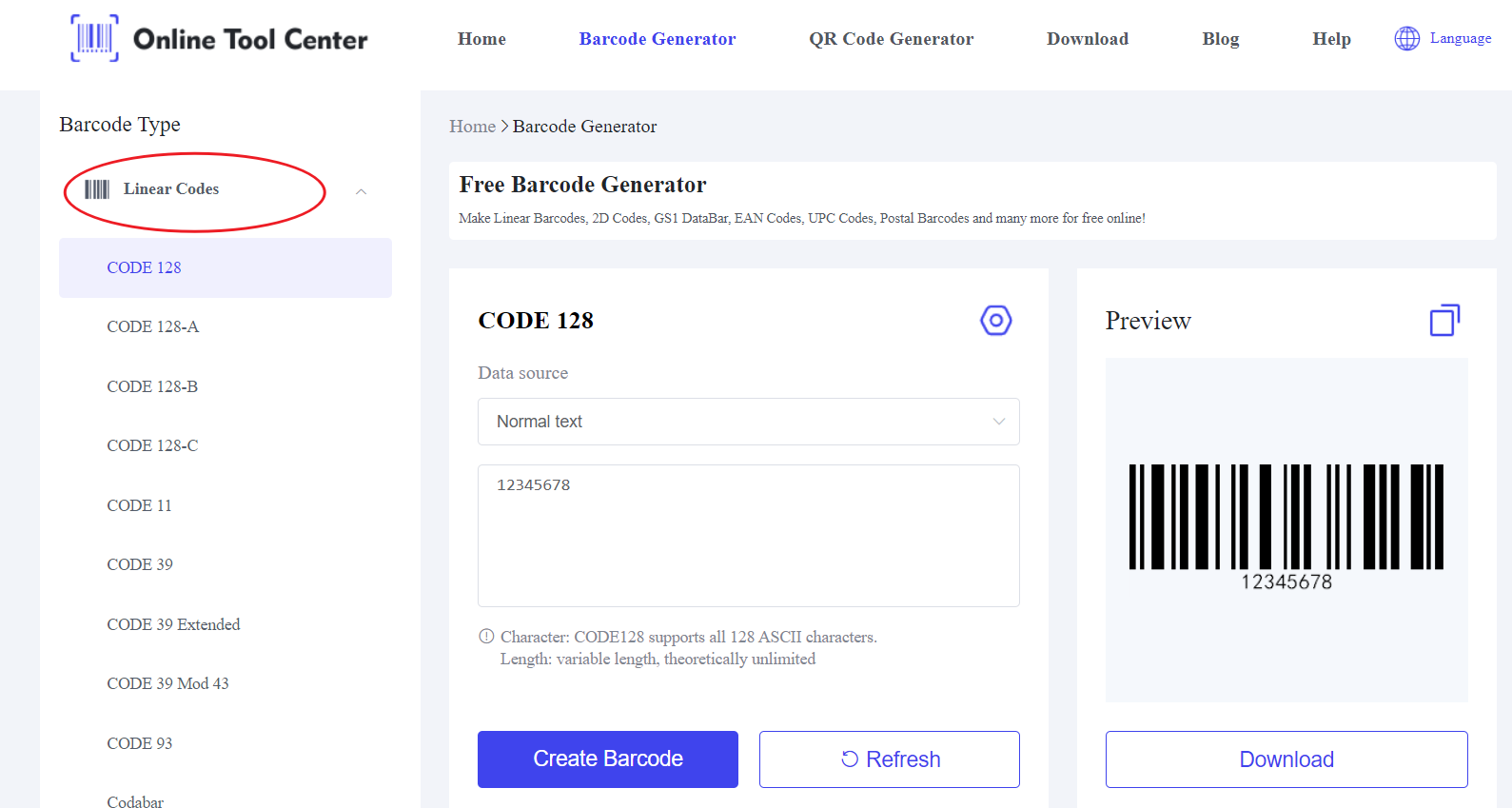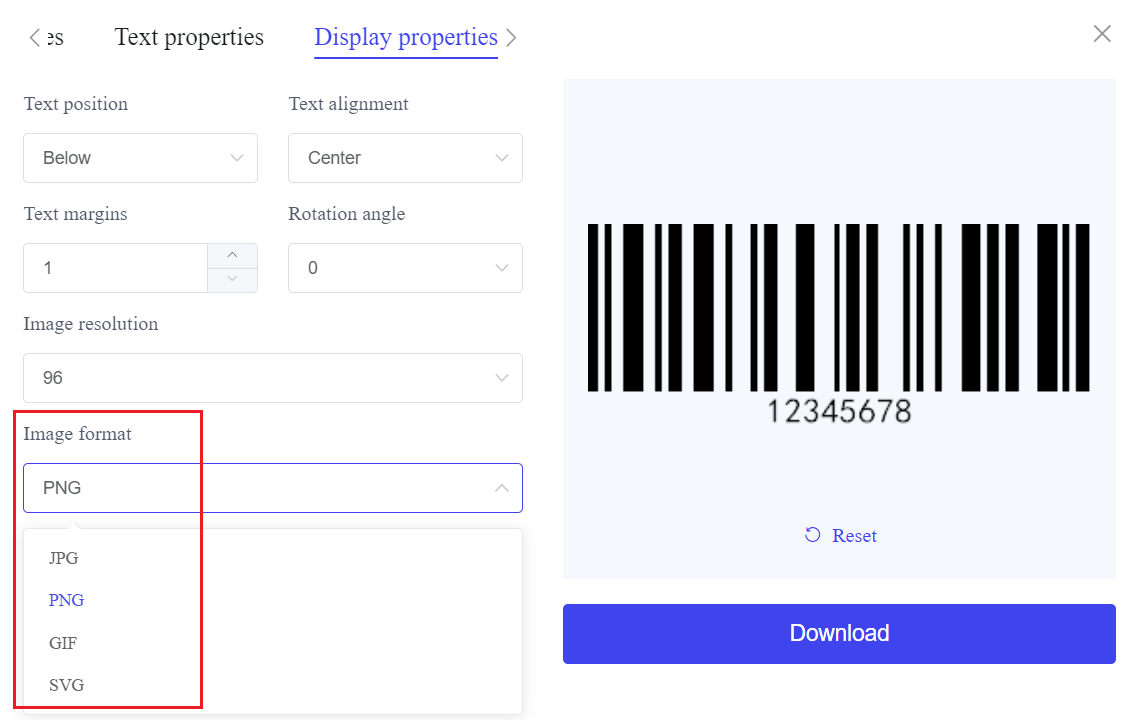Linear barcodes are integral to modern inventory management and retail operations. These barcodes, distinguished by their parallel lines, encode data clearly and effectively.
This article will delve into what a linear barcode is, how it differs from 2D barcodes, the advantages it offers, and practical applications. Additionally, we will guide you on using a linear barcode generator for various purposes.
What is a Linear Barcode?
A linear barcode (or 1D barcode) represents data by varying the widths and spacings of parallel lines. These barcodes are scanned by optical devices that translate the pattern into digital information.
Key Characteristics of Linear Barcodes
● Simple Structure: Linear barcodes feature vertical lines and spaces.
● Limited Data Capacity: Typically encodes up to 25 characters.
● High Readability: Easily scanned by most barcode readers.
Common types of linear barcodes include:
Type of Linear Barcode | Description | Common Uses |
UPC | Widely used in retail, encodes a 12-digit number identifying a product and its manufacturer. | Retail product identification, inventory management |
EAN | Similar to UPC but used internationally, available in 13-digit (EAN-13) and 8-digit (EAN-8) formats. | International retail, product tracking |
Code 39 | Encodes alphanumeric characters, including letters, numbers, and some special characters. | Asset tracking, inventory control, military and automotive industries |
Code 128 | Encodes a broad range of characters, including letters, numbers, and control codes; highly versatile. | Shipping and packaging, logistics, warehousing |
ITF-14 | Used for shipping and logistics; encodes 14 digits. | Carton and pallet labeling, logistics |
Interleaved 2 of 5 (ITF) | Encodes numeric data in pairs, efficient for encoding large amounts of data. | Warehouse management, distribution, libraries |
Codabar | Encodes numbers and a few special characters; easy to print. | Libraries, blood banks, photo labs |
What are the Advantages of Linear Barcodes?
Despite the advent of 2D barcodes, linear barcodes remain popular due to several distinct advantages:
1. Simplicity and Cost-Effectiveness
Linear barcodes are straightforward to create and implement. They require minimal training and are compatible with a wide array of scanning devices, making them a cost-effective solution.
2. High Reliability
Linear barcodes are known for their reliable performance in scanning, even in less-than-ideal conditions. This ensures quick and accurate data capture.
3. Compatibility
Retail and inventory management systems widely support linear barcodes, making them versatile and easy to integrate into existing workflows.
4. Speed
The simple structure of linear barcodes allows for rapid scanning and processing, essential for fast-paced environments like retail checkouts and warehouses.
What is the Difference Between Linear and 2D Barcodes?
Understanding the differences between linear and 2D barcodes is essential for selecting the right barcode type for specific applications.
1. Data Capacity
Linear Barcodes: Encode a limited amount of data, usually up to 25 characters.
2D Barcodes: Can store more complex data, including text, URLs, and images, thanks to their grid-like structure.
2. Structure and Appearance
Linear Barcodes: Comprise a single row of lines and spaces.
2D Barcodes: Feature a matrix of squares, dots, or other shapes arranged in two dimensions.
3. Scanning Technology
Linear Barcodes: Read by simple laser scanners.
2D Barcodes: Require image-based scanners or cameras due to their complex patterns.
Practical Applications of Linear Barcodes
1. Retail
In retail, linear barcodes such as UPC and EAN streamline the checkout process, manage inventory, and track sales. Each product has a unique barcode containing essential information like product name, price, and stock level.
2. Inventory Management
Linear barcodes are critical for inventory management, enabling businesses to track stock levels, monitor product movement, and reduce errors in inventory records.
3. Healthcare
In healthcare, linear barcodes label medications, patient records, and medical equipment, ensuring accurate tracking and enhancing patient safety by minimizing errors.
4. Manufacturing
Manufacturers use linear barcodes to track raw materials, monitor production processes, and manage finished goods, improving efficiency and ensuring product quality.
How to Use a Linear Barcode Generator?
Creating your linear barcodes is simple with a linear barcode generator.These tools allow you to generate barcodes quickly and easily for various applications. Here's a step-by-step guide:
1. Choose a Barcode Type: Select the type of linear barcode that suits your needs.

2. Input Data: Enter the data you wish to encode, like product numbers or inventory codes.
3. Generate the Barcode: Use the generator to create your barcode. Download and print it for use on products, packaging, or documentation.
4. Customize the Barcode (Optional)
Many barcode generators offer customization options. You can adjust the size, resolution, and format of the barcode to meet your specific requirements. For instance:
● Size: Choose the appropriate dimensions to fit your label or packaging.
● Resolution: Higher resolution may be needed for clear printing on small labels.
● Format: Select the output format (e.g., PNG, JPG, SVG) based on how you plan to use the barcode.

5. Download and Save the Barcode
Once you are satisfied with the generated barcode, download it to your computer. Save the barcode in a safe location where you can easily access it for printing or integration into your product labels or documentation.
6. Print and Use the Barcode
Print the barcode on labels, packaging, or documents using barcode label printers. Ensure the barcode is printed clearly and at an appropriate size to maintain readability. Test the printed barcode with barcode scanners to verify that it scans correctly and encodes the intended data accurately.
By following these steps, you can effectively use a linear barcode generator to create custom barcodes for your business or personal needs.
In summary, understanding linear barcodes and their applications is essential for efficient data management across various industries. These barcodes offer simplicity, reliability, and compatibility, making them invaluable tools for businesses.
By using a linear barcode generator, you can easily create custom barcodes to streamline your operations and improve efficiency.





